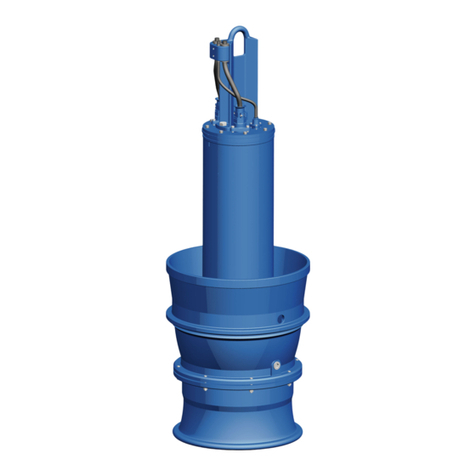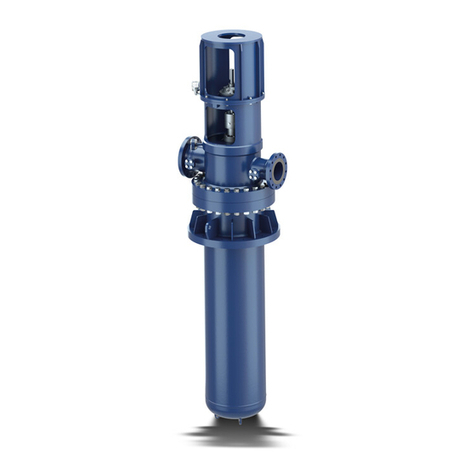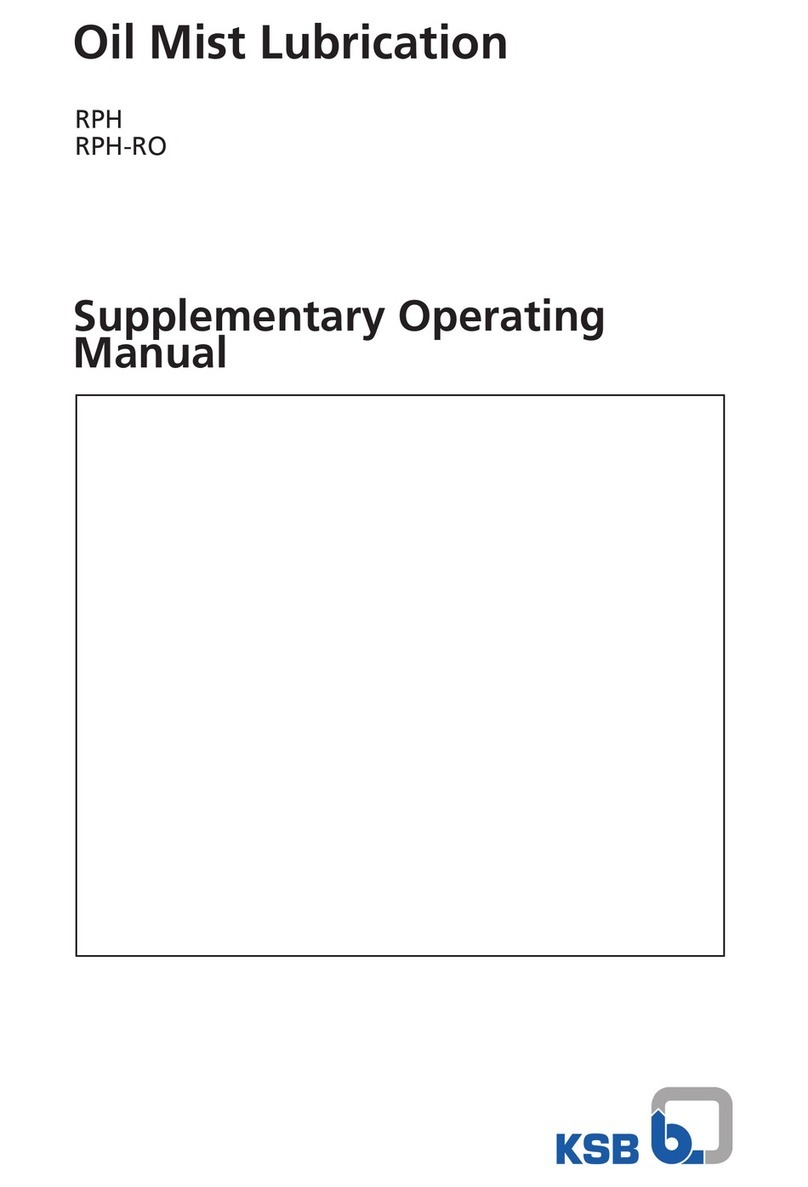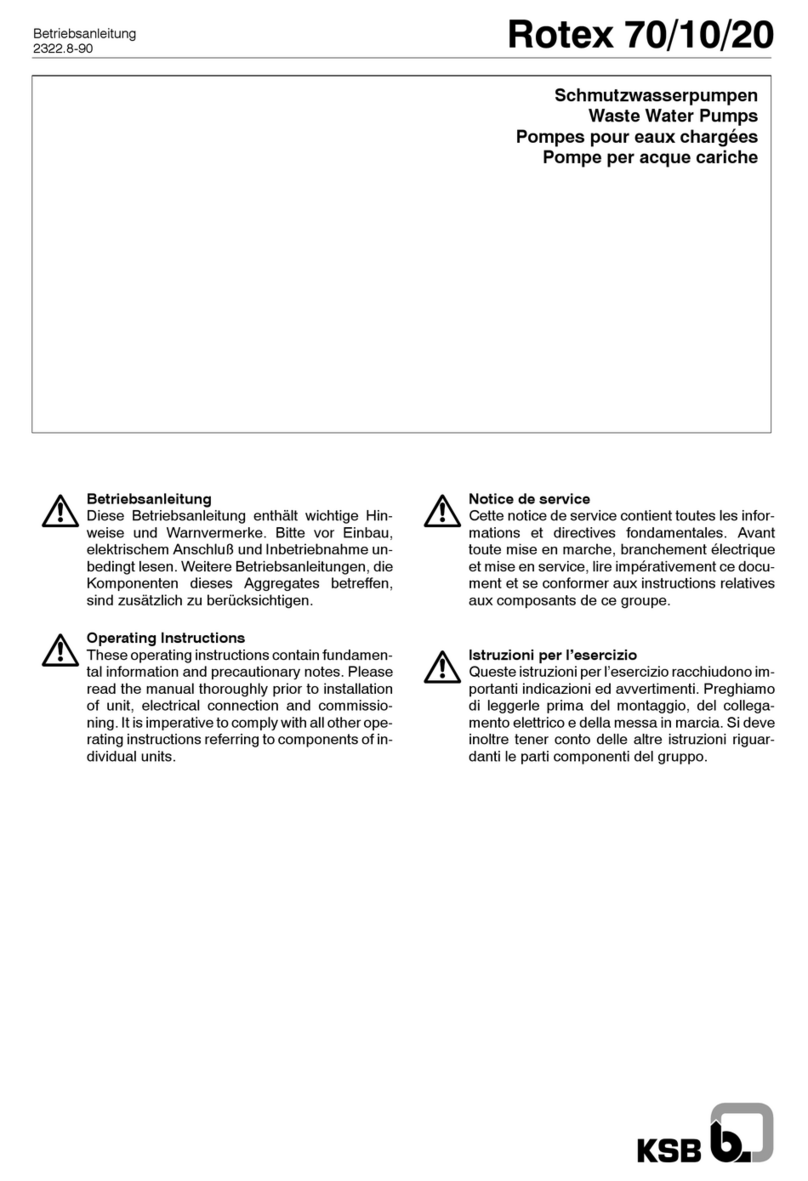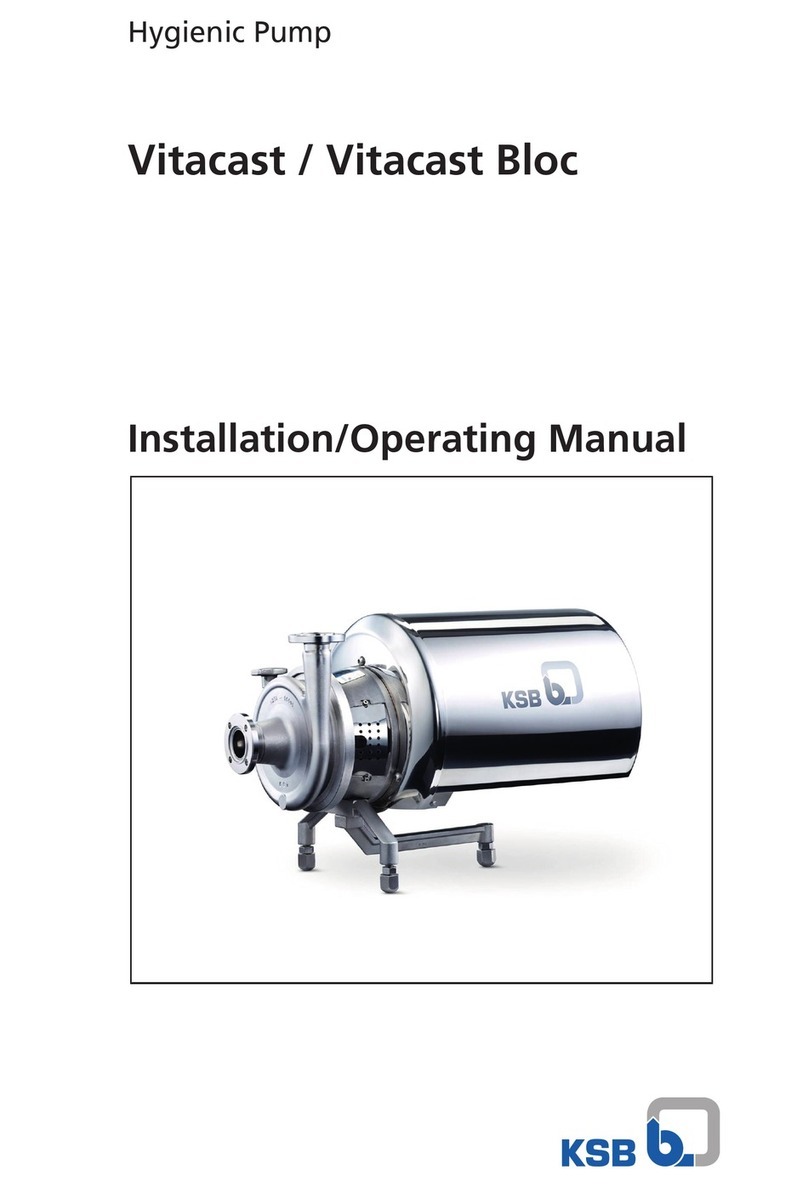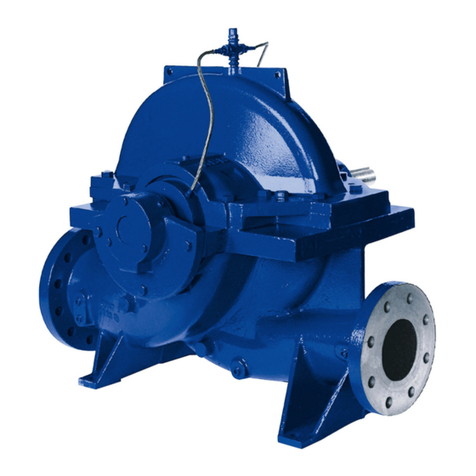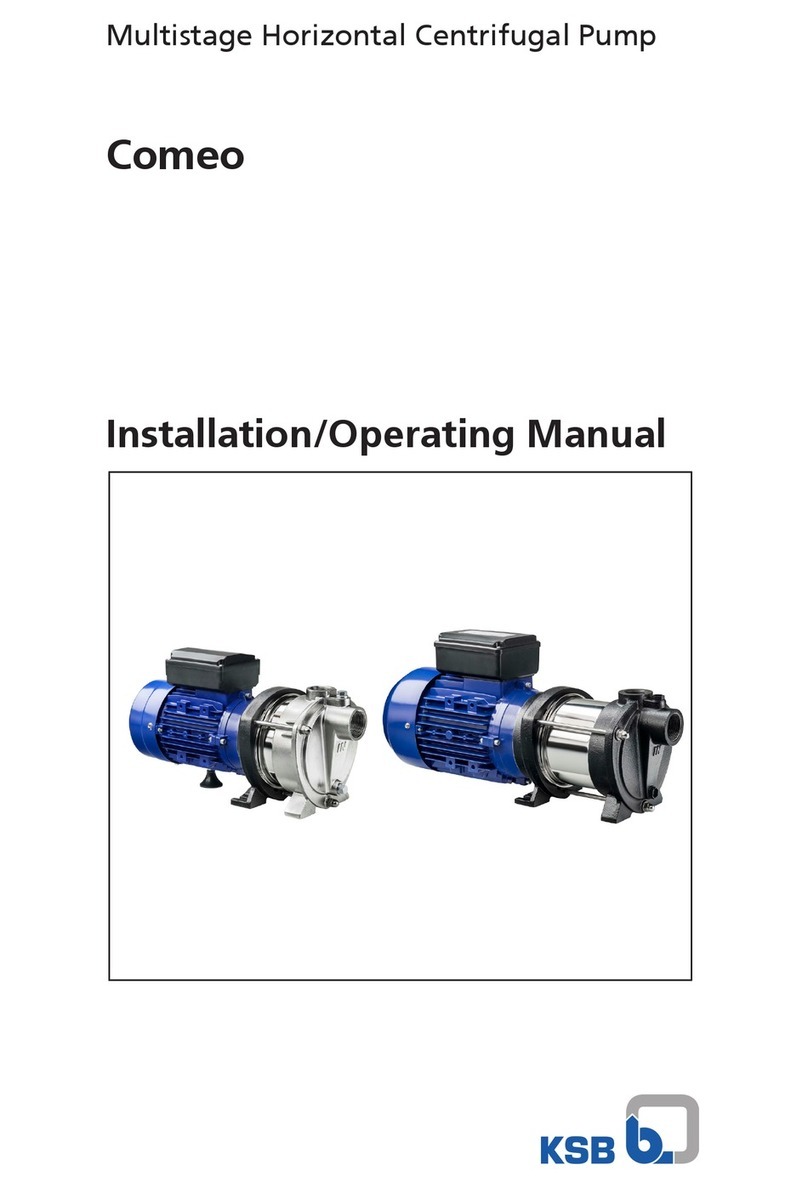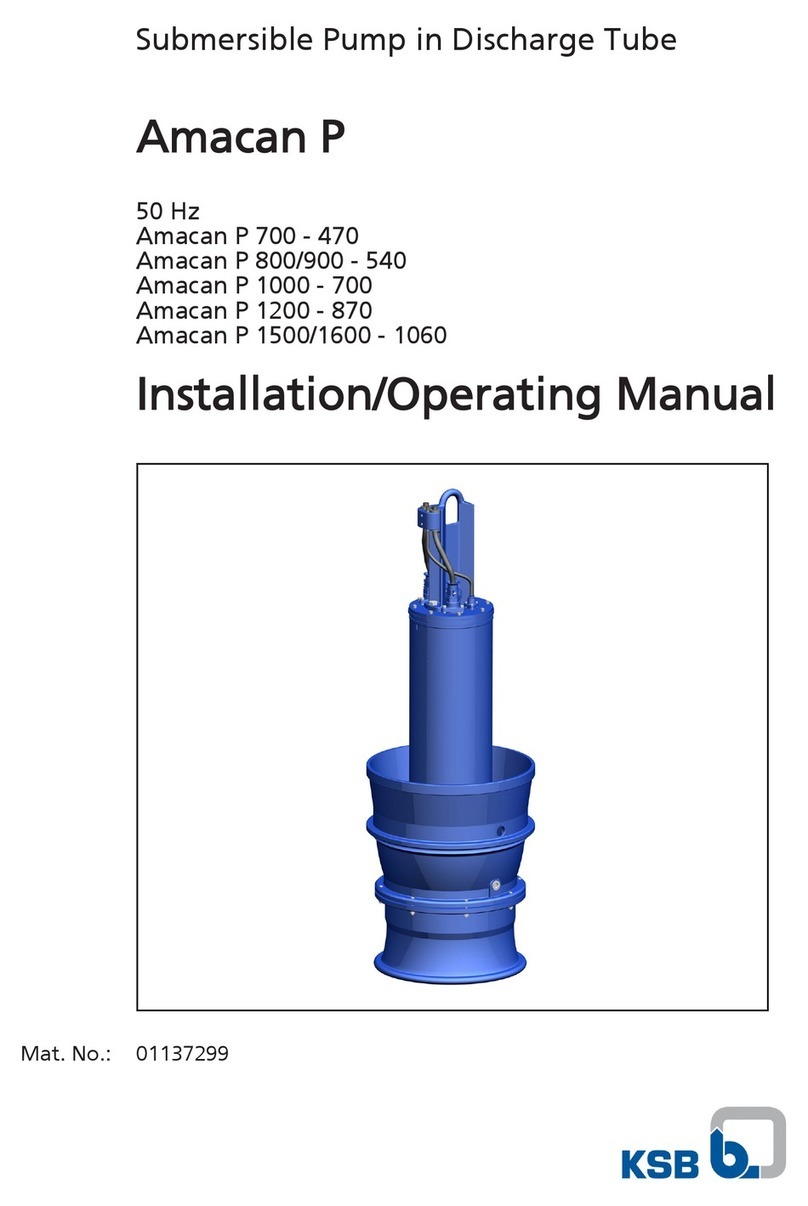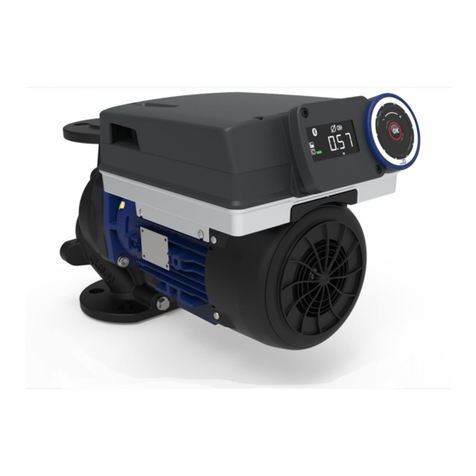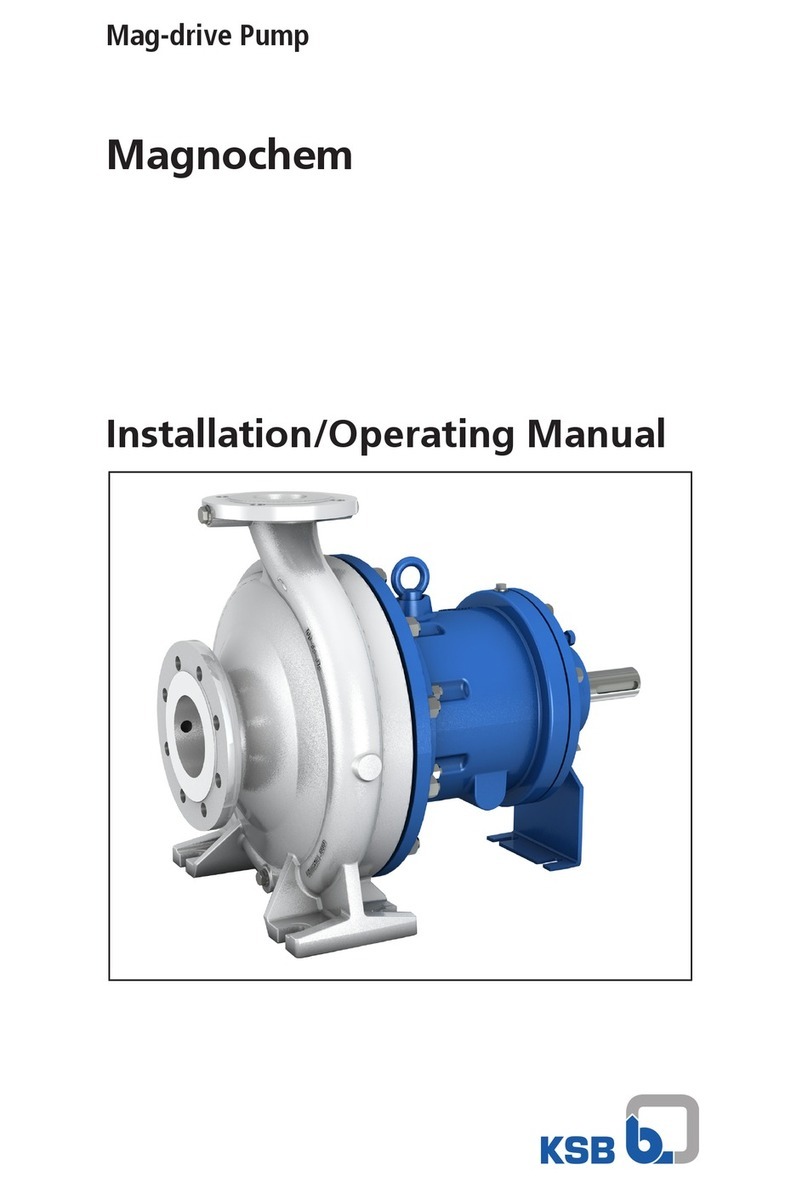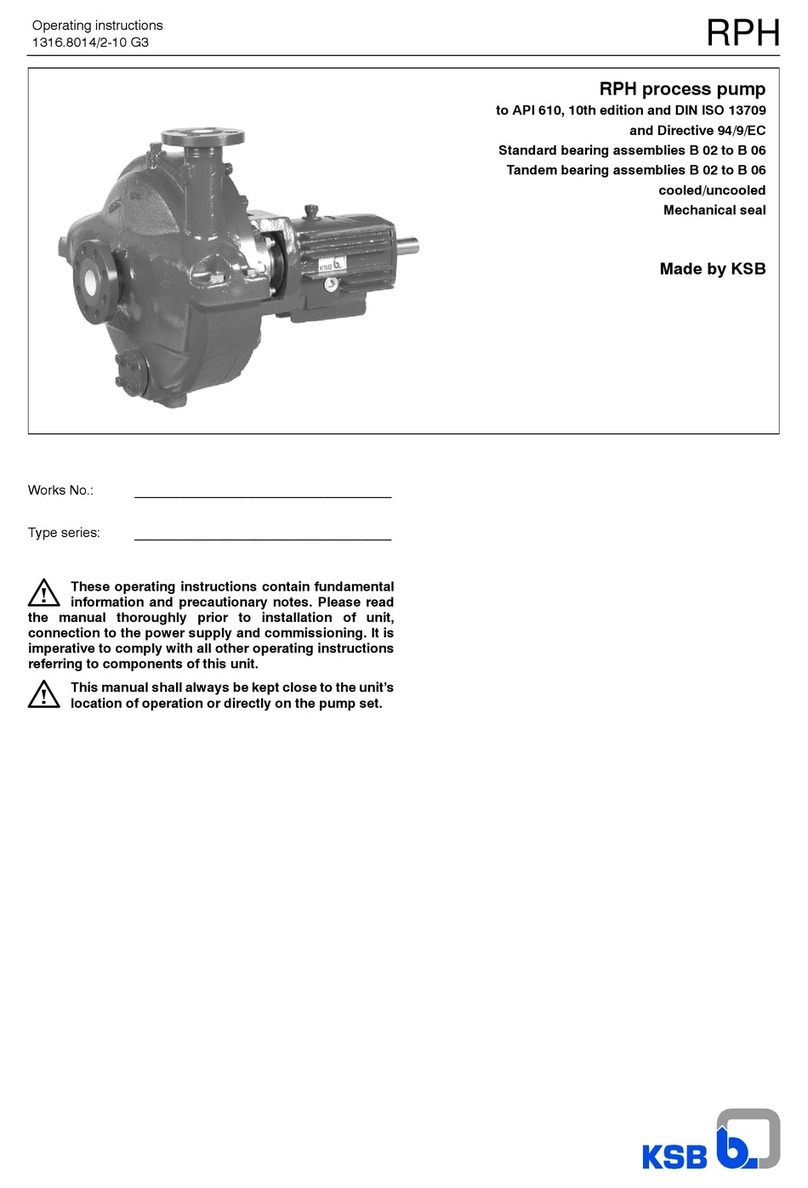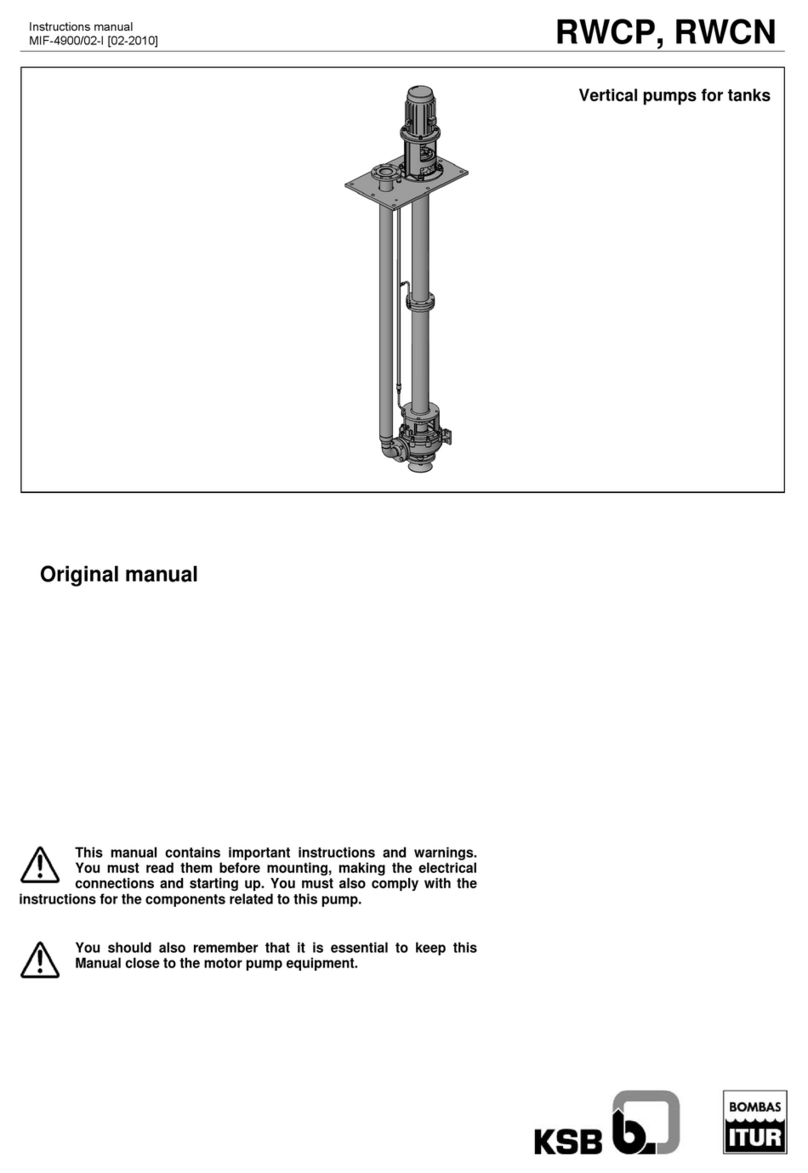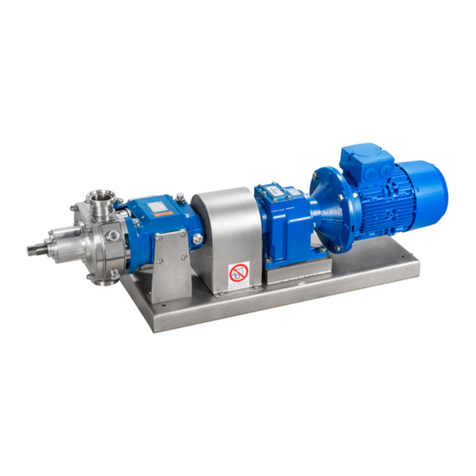
CPK
again by one to two complete turns, and thereafter tightened
lightly by hand. The correct and even seating of the stuffing
box gland (452) should be checked when the pump is
subjected to suction pressure, by inserting a feeler gauge
between the stuffing box gland (452) and the shaft protection
sleeve (524).
In the case of the special stuffing boxes, a lantern ring is also
inserted in the packing compartment, at the centre of the
compartment (between the packing rings). In these cases,
an information plate is affixed to the casing cover (161),
showing the position of the lantern ring. The lantern ring must
register beneath the drilled hole in the casing cover (161), to
enable the sealing liquid to enter. The pressure of the liquid
should be 1 to 4 bar above the pressure existing in the packing
compartment of the stuffing box.
The packing of the stuffing box should be carried out with
great care, to avoid an excessively high radial pressing force
of the packing rings against the shaft protection sleeve, which
might damage the latter. If the shaft protection sleeve is scored
or grooved, even a new packing cannot be expected to last
very long in service.
A newly packed stuffing box should leak profusely at first. If
this leakage does not cease of its own after a relatively short
period of operation, the nuts on the stuffing box (452) gland
should be tightened slowly and evenly while the pump is
running, until the stuffing box only drips slightly. Make sure
that the stuffing box gland (452) is tightened evenly and not
askew, as otherwise the shaft protection sleeve (524) might
be damaged.
If the newly packed stuffing box starts to emit smoke when the
pump is started up for the first time, the pump should be
switched off. If the smoking persists after the pump has been
started up again and operated several times in succession,
the nuts on the gland should be slackened slightly, or the
stuffing box should be inspected if necessary.
3.1.2.5 Packing Material
When selecting the packing material, make sure it is
compatible with the fluid pumped (consult the manufacturer
in case of doubt).
Packing material which has been kept in store for a certain
period has a longer service life than standard fresh packing
material from the packing manufacturer. Packing material fitted
in the pump while despatching are :-
CPK G/GC : Style 1003
E/EC : Style 1003
C : Style 1003
CPK EY : Graphoil
3.1.2.6 Sealing liquid
In case of soft packed pumps working under vacuum, handling
impure liquids, sealing liquid is required to be fed through
lantern ring connection. For this the GA drawing of the pump
should be referred to.
3.1.3 Alternate packing arrangements available
The pump suction lift line must be vented and primed with the
fluid pumped before start up. This valve in the suction lift line
must be fully open. All auxiliary connections provided on your
pump (e.g. flushing liquid, sealing liquid, cooling liquid etc.)
4
must be opened fully and the unimpeded flow through these
lines must be verified. Open the isolating valve in the vacuum
balance line (if applicable to your installation) and close the
vacuum tight isolating valve ‘E”. (see Z fig.5).
3.1.4 Checking the direction of rotation
The direction of rotation must correspond to the arrow on the
pump. This can be checked by switching on the driver for a
short instant and switching it off again immediately. Mount the
coupling guard after checking the direction of rotation.
3.2 Start up
Always make sure that the isolating valve in the discharge
line is closed when the pump is switched on. Only after the
pump has attained full operating speed should the discharge
valve be opened gradually and the operating point conditions
adjusted by means of this valve.
Caution :
After the operating temperature has been attained and/or in
the event of leakage, tighten the Bearing bracket lantern to
casing connection bolts after switching off the pumping set. If
the leakage persists, check/change the gasket.
3.3 Shut down
Close isolating valve in the discharge line. If non-return valve
or a check valve has been incorporated in the discharge line,
the isolating valve can remain open so far as there is a back
pressure present in the line. Switch off driver. Observe the
pumping set running down smoothly and quietly to a standstill.
In the event of a prolonged shutdown, the isolating valve in
the suction lift line should be closed.
The shaft seal of pumps which are connected to a supply
vessel under vacuum must be fed with flushing liquid even
when the pump is switched off. In the event of frost and/or of
prolonged shutdowns, the pump and the cooling
compartments (if applicable) must be drained or otherwise
protected against freezing using suitable antifreeze solution.
4. Maintenance and lubrication
4.1 Supervision of operation
The pump should run quietly and free from vibration at all
times. The pump must never be allowed to run dry. Avoid any
prolonged running against a closed discharge valve.
The bearing temperature may be allowed to attain up to 500C
above room temperature but should not exceed 800C.
Make sure the oil level is adequate (see section 3.1.1). The
isolating valves in the auxiliary feed lines must always remain
open when the pump is running.
The soft packed stuffing box (if your pump has one) should
drip slightly during operation. The stuffing box gland should
only be tightened lightly.
Any standby pumps in the pumping installation should be
operated once a week for a short instant, by switching on and
switching off again, so as to maintain them in good condition
for instant start-up in case of emergency. The correct
functioning of the auxiliary connections should be kept under
observation. When signs of wear become apparent on the
